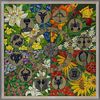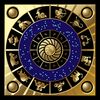Flower EncyclopediaENTER THE WORLD OF FLOWERS |
Other News
Episcia
Category: Decorative flowering
22 Aug : 11:13
To view pictures click on them




 Popular name: Epistsiya
Popular name: Epistsiya
Family: Gesnerievi (Gesneriaceae)
One of the most effective ampelni plants for interior decoration are epistsiite.Tehnite pile leaves flashing in silver, bronze or copper shades are very decorative and attractive, but when they appear and scarlet flowers, plants become fabulously beautiful. Another valuable kachestsvo is their rapid growth and long flowering period.
These are low on grassy Gesnerievi representatives of the family, which originate from the tropics of the Americas. Adults reach about 50-60 cm in length and have advanced to 20-30 branches, of which at least half bloom simultaneously.
The leaves are downy, with color from brown to medenocherveno. It flowers from April to August with red, white and blue colors.
Although the name in Greek means epistsiya shaded, plants grow best in scattered light. If the premises are kept epistsiyata is dark, it will develop and flourish without problems, stool is illuminated by fluorescent lamps with 12-14 hours a day. Because the required high air humidity is good for pots of epistsii be placed in large containers filled with damp moss. Direct splashed on the leaves is not recommended as it is received ugly spots, but at low temperature and decay. Another important condition epistsiyata to show all its magnificence is the temperature. In winter it should not fall below 18 degrees, because the plants are retained izdrebnyavat leaves and increases the risk of decay.
Propagation: the most common and easy way of propagation is by root epistsiite side of arresters or stem cuttings (from a mother plant which branches off beautifully), provided that the following conditions to ensure rooting:
• breeding temperature should be about 20-25 ° C.
• rooting may occur in water sfagnum, peat tablets or directly in soil.
• arresters / cuttings for rooting should not be very long - about 6-7 cm, but must be cut so that its lower end to a junction.
• arresters / stecklings are immersed in water (also set in sfagnum in peat tablets or directly into the soil) is not very deep, up to about 2-2,5 cm, and the knot must fall in the substrate for rooting. Stem cuttings are cut into leaf nodes, as the lower leaves removed from stem. Korenchetata usually occur at the nodes, which occurred a week to ten days. When korenchetata reached to 2-3 cm long, feel free to epistsiyata planted in soil.
• when rooting in sfagnum, peat tablets or directly in soil, plants should provide additional increase in air humidity. This could be used miniparnik (transparent plastic box, closing a cover of glass or transparent plastic bag). Once daily for half an hour miniparnikat is detected, then the emergence of plant roots to gradually acclimate to room temperature and humidity. Young plants several times to transplant into larger pots.
If you follow the above tips on rooting epistsiite practicable throughout the year.
Pests: FAQ - Frequently epistsiite are destruction of mites, lice belokrilki and Scale.
Soil for growing epistsiite must be lightweight and vodopropuskliva. Water for irrigation must be aged at least several hours, not containing chlorine. It is poured into the substrate and after 2 hours if the plant has not yet absorbed it is poured. Drought can seriously harm this plant.
Light: scattered light is needed, but not direct sunshine.
Water: Watering is from the pad awaiting katose prosahvane good soil.
Humidity: High, but do not pulverize directly.
Feeding: During the intensive growth.
| episcia gesneriaceae |
Comments are turned off for this item0
| episcia gesneriaceae |























































